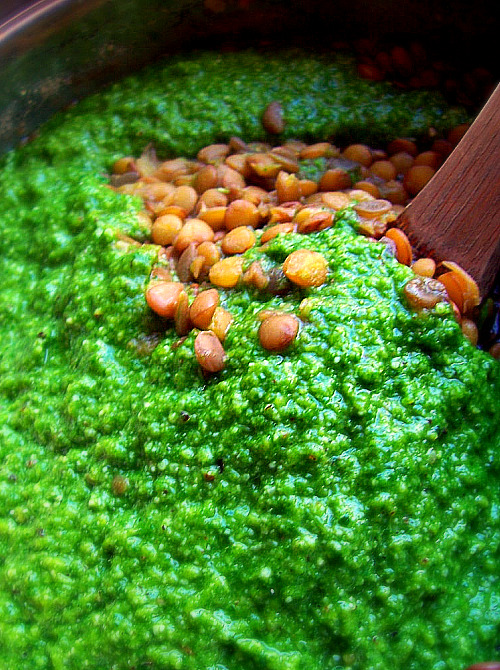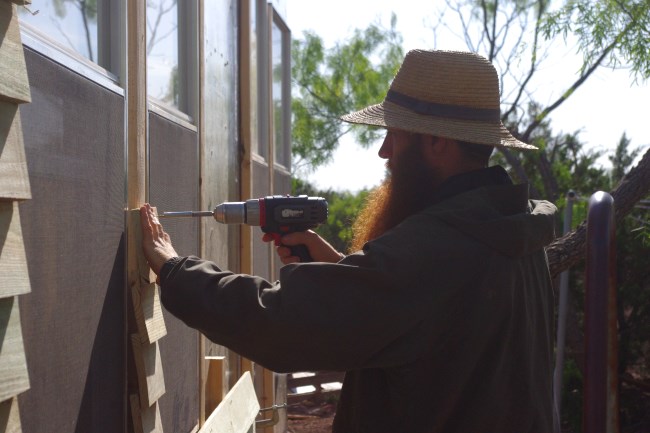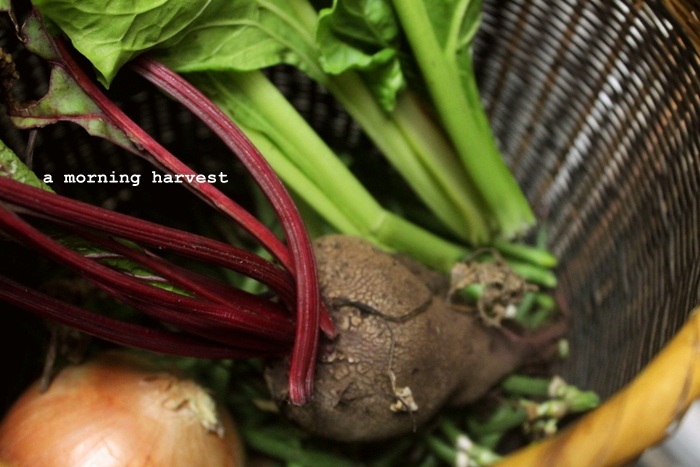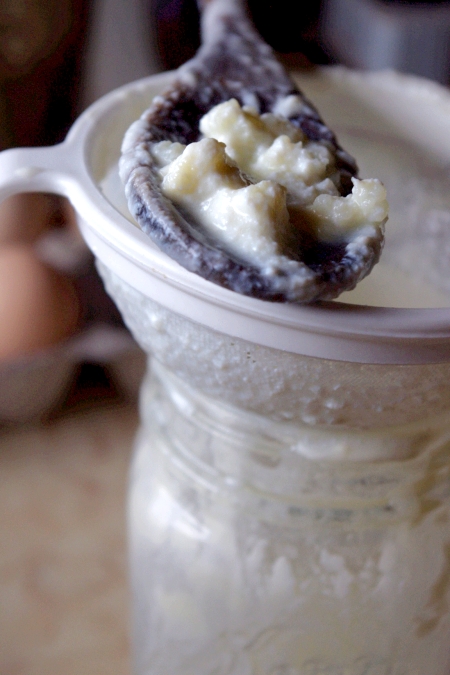Wild Edibles: Garlic Mustard and Recipe for Green Lentils with Wild Garlic Mustard Pesto

Apparently this edible plant is quite the pest. If you google it, the words "invasive-plant" and "unwelcome weed" appear over and over. Garlic mustard was brought over from Europe as an over-wintering pot herb. And here in the mid-west this little "pest" is just about all over the place.
Identification
The leaves of garlic mustard are round, heart-shaped with a deep green color and lots of little veins. They form low-to-the-ground rosettes in cute little mounds. I have found them mostly under the cover of other larger bushes or plants as they survive quite well in the shade.
Both the root and the leaves of the plant are edible. The leaves smell like garlic when crushed and the roots are long, slender, and white, with the faint smell of horseradish.
Culinary Uses
The flavor of the leaves is fairly pungent, depending on how mature the leaves are. The younger the plant, the milder the flavor, so pick them when they are small.
The leaves can be used like any other green:
- in quiches
- in soups or stews
- sauteed with other vegetables
- made into a pesto, as in the recipe below
Green Lentils with Wild Garlic Mustard Pesto

Recipe Notes: You could use any pungent green for this recipe. The recipe list seems long, but it takes minutes to throw everything into the food processor and whir it up. Garlic mustard is quite pungent on it’s own, and so is the pesto. But when combined with the earthy lentils it really works. It works so well, in fact, that my husband was disappointed that I hadn’t made more. And he cringes at the word pesto.
Ingredients
- 2 cups green lentils, sprouted or soaked for at least 7 hours and drained
- ~2 cups garlic mustard leaves, packed
- 1/2 – 1 cup romaine lettuce, packed
- 1 tablespoon chopped fresh oregano
- 1/4 cup extra virgin olive oil
- 1/4 cup raw parmesan cheese, grated or shaved
- 1/4 teaspoon sea salt
- 1/4 cup water
- 2 teaspoons rice wine vinegar
- 1 teaspoon balsamic vinear
- 2 garlic cloves
- 1/4 cup brazil nuts or almonds
Directions
- Cook lentils in 2-4 cups water until soft. Drain off any excess water.
- While lentils are cooking prepare the pest: In a food processor or blender combine all ingredients and blend until it forms a thick paste. Thin with additional water if necessary. Taste for seasoning and add salt if necessary.
- Combine hot lentils with pesto and serve with an additional grating of cheese if desired.
So take a look around your backyard or neighborhood park and see if you can find some free garlic mustard!




How interesting. I’ve never seen garlic mustard before. Admittedly when I saw this in my Reader I thought it was a recipe for mustard made with garlic.
Thanks for introducing me to something new.
Awesome! I was just pulling out some of the wild garlic mustard that grows in my back woods because I learned of it’s invasiveness. Instead of trying to get rid of it, I’m going to make an effort to manage, harvest and use it! Last year, I was going nuts pulling out all the lambs quarters and purslane growing wild in my organic lawn until I discovered their edibility. There’s a wealth of nutrition in some of those weeds! One thing I learned about garlic mustard as well, is that it is easily identifiable (you can tell by the smell, too!) and there are no poisonous look-alikes. Thank you so much for sharing this info. I’ll be making pesto this weekend!
That pesto is just gorgeous! One man’s weed is another man’s dinner! 🙂
Can I just say how amazing it is when things just *click*? Seriously, I haven’t checked anyone’s blogs in quite a while and here I’m visiting you and seeing a picture of the plant I pulled from all over the yard today to feed to the chickens as they were desperate for fresh greens! Had no idea what it was! I’ve also noticed over the years in our yard at least, how one naturally-occurring plant seems to dominate each year. For example, one year we had loads of catnip that came up on its own. Then Motherwort and this year seems to be the time for garlic mustard. I swear I’ve never seen it grow in our beds before. Hmmm. Wondrous. 🙂
I’ve never heard of that before! I wonder about using straight mustard greens….those are on my list of greens to master but I’m scared of ’em 🙂
can you please tell me, if there is a difference (that you know of) between mustard garlic and ground ivy? I have tons of what your picture looks like but someone told me that its ground ivy. If its edible, I am going to have a feast fit for a neighborhood
Colleen – I am not familiar with ground ivy, but I have seen something similar in shape to the garlic mustard. I would do a bit of research before eating it 🙂
There are several easy ways to tell Garlic Mustard apart from Ground Ivy. (1) The smell of the plants is quite different – crush up the Garlic Mustard leaves and you will get a garlic smell, whereas the crushed ground ivy leaves’ smell (while strong) does not resemble garlic. (2) Garlic mustard leaves often can get to be 3-4 inches in diameter, whereas ground ivy leaves rarely exceed 2 inches across. (3) Second-year garlic mustard plants grow straight stems up to 2-3 feet tall, whereas ground ivy, true to its name, sprawl along the ground, with no straight stems. BTW, ground ivy is a member of the mint family, which has no poisonous members that I’m aware of, so it would not be harmful if someone did mistake ground ivy for garlic mustard and ate it.
Russ – Thanks so much for the tips!
Also, remember, all mints (including ground ivy) have a square stem; garlic mustard does not.
And ground ivy flowers are blue/purple and low from the stem, while those of garlic mustard are white in bunches at the top of the stalk.
May I please repost this recipe on my blog? I will give you full credit and a link to drive back to your site. Part of my blog is about foraging for foods we have forgotten, and the pesto with lentils is not only foraged but health!
Docaitta – Sure!
Very good information. Lucky me I came across your website by accident (stumbleupon).
I’ve book marked it for later!